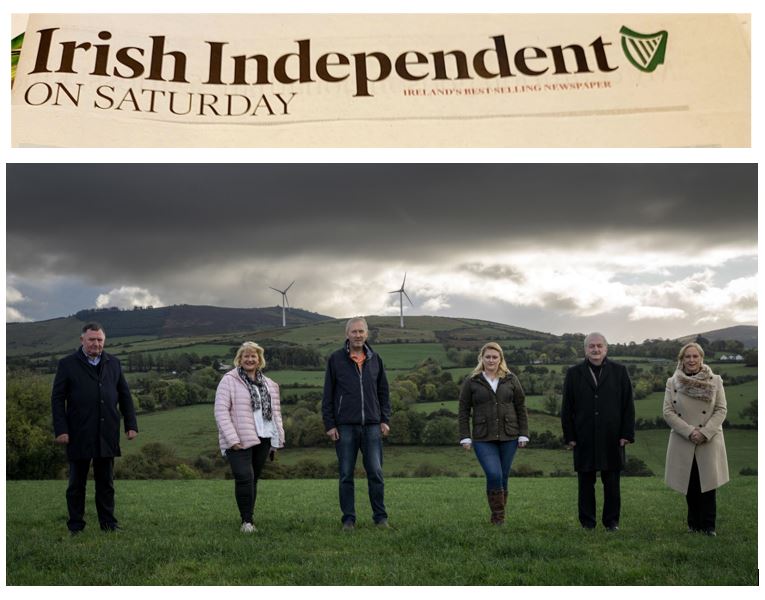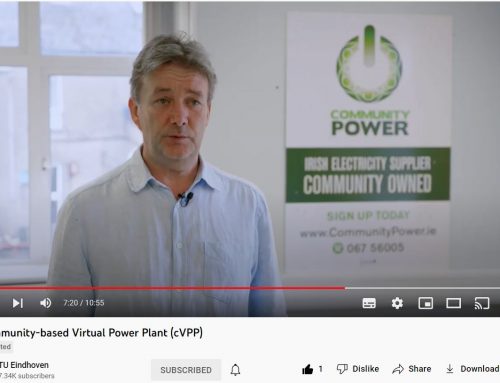The most notable change we will notice when we enter a town or city in 2050 will be the almost eerie quietness of the streets and freshness of the air.
The sale of new petrol and diesel engines is due be banned by 2030, and this should ensure that the entire fleet of private cars will run on electricity or other forms of renewable energy by 2050. All public transport will be electrified.
William Walsh, chief executive of the Sustainable Energy Authority of Ireland, says 66pc of transport to work is by car but this is likely to fall by 2050 as more people work from home or in local hubs. He predicts that fewer people will own cars as public transport is made more available, cycling infrastructure improves and drivers opt to rent vehicles.
Experts in transport planning envisage villages or suburbs where cars are pushed to the margins. “It’s not about stopping people driving,” says Lorraine D’Arcy, lecturer in the School of Transport at Technological University Dublin. “It’s about making the most sustainable choice the easiest.”
She says we could move to a model close to that of the Vauban suburb of Freiburg in Germany, where cars are parked on the edge of the area, and are only brought next to the home for, say, dropping off or picking up children and groceries.
Children play and cycle freely on the streets, and cars have to be driven at a very low speed.
Sadhbh O’Neill, lecturer in climate policy at Dublin City University, says we should develop a model of liveable towns where cars are removed from the streets and where children can play and walk to shops and schools.
The concept is to improve quality of life by creating cities where everything a resident needs can be reached within a quarter of an hour by foot or bike. The 15-minute city concept requires minimal travel between homes, workplaces, restaurants, parks, hospitals and cultural venues. Under this model, each neighbourhood should fulfil six social functions: living, working, supplying, caring, learning and enjoying.
Dr D’Arcy prefers the notion of the liveable village, where everything is accessible, to the idea of the 15-minute city.
“It could be a rural village or an area of a city,” she says. “We have already seen in the pandemic that people are reconnecting with their communities. Their homes are not just places to sleep.”
Smaller, energy-efficient homes
One of the Government’s biggest challenges is to adapt existing homes by 2050 so that they are heated by renewable energy. At the moment, Irish homes use 7pc more energy than the EU average and emit 58pc more CO2. In 2019, they were 70pc reliant on fossil fuels, including oil-fired boilers.
By 2050, new and retrofitted homes will tend to be equipped with heat pumps that work by converting energy from the air outside the home into heat inside.
Once the initial outlay has been made, William Walsh of the Sustainable Energy Authority of Ireland believes homes will be healthier and warmer.
Sadhbh O’Neill of DCU says new housing will be built at higher density, homes will be smaller and less of the space between buildings will be devoted to car travel and parking.
However, higher density will not mean vast tower blocks, but apartment buildings of four to six storeys, interspersed with smaller developments.
Walsh says homes are more likely to be built from sustainable materials such as wood.
A growing number of neighbourhoods of dense housing will be able to rely on district heating. “District heating is already common in other parts of the world,” Walsh says.
“The heat generated in a heat and power plant close to the apartment blocks is piped into homes. Effectively, the cost of having one heater that heats [a number of] apartments is much lower than having 150 systems running in a block or a number of blocks.”
The heat for these systems could come from a variety of sources. There is already a project being developed to draw heat from an Amazon data centre in Tallaght, Co Dublin. Pipes that will carry hot water to buildings around the centre of Tallaght are still being laid and the system is expected to run from next spring.
Initially, it will serve council buildings, Technological University Dublin’s Tallaght campus and 133 affordable homes to be built on public land. The incinerator at Ringsend will also become a source of district heating close to Dublin city centre.
By 2050, we will rely on renewable energy and most of this will come from wind and solar farms, says Walsh.
There will be better storage options for wind energy, making it easier to supply the national grid, and wave energy is likely to be seen as a viable source of power.
“One of the advantages of wave energy is that it is less intermittent,” says Walsh. “You don’t have to wait for the wind to blow or the sun to shine.”
Farms of solar panels will increasingly become a feature of the landscape. The single largest solar farm in the Republic was recently opened near Kinsale, Co Cork, to supply power to the Eli Lilly pharmaceutical plant.
Built by the Irish-owned company Enerpower, the farm has 13,000 solar panels on a 16-acre site.
In some areas, communities have tried to take power into their own hands, hoping to supply energy to the grid. Community energy projects have been slow to get off the ground, because of red tape, but could be more common by 2050.
In Templederry, Co Tipperary, residents set up their own windfarm as early as 2012, and even have their own utility, Community Power. Among the driving forces of the project were the Fogarty family, with father John helping to set up the project, which is promoted by his daughter Sarah.
The group started selling electricity to the grid in November 2012, and all dividends from the community-owned project will be reinvested in local activities.
“The windfarm is run along co-operative principles and the benefits to the country of this type of project are huge,” John Fogarty says. “It means that whatever money does accrue from our small project stays in the local economy, rather than going abroad.”




